The working and mining network Xiao Bian starts from the principle and introduces the current universal use of the PM2.5 sensor, comprehensive evaluation of imported brands, convenient integration and selection
Principle introduction:
Light scattering method
Principles of light scattering are LED light (ordinary optics), lasers, etc. The sensor can effectively detect particles with a particle size of about 0.5 μm or more. Light scattering methods have relatively low reliability at this time. However, due to the light scattering principle, the probe is relatively inexpensive. , The probe is easy to install, use, relatively suitable as a monitoring application, has more advantages than other principles, and the application provider selects better quality, and relatively stable and sensitive probe, the reliability of data is greatly increased! Currently, the light scattering method is widely used in the market and is a better choice for PM2.5 monitoring.
2, weight method
At present, the gravimetric method is mainly used for the determination of atmospheric particles in China. The principle is to use a sampler with certain cutting characteristics to extract a fixed volume of air at a constant speed, so that the PM2.5 and PM10 in the ambient air are trapped on the known quality of the filter, according to the difference in the quality of the filter before and after sampling. Sample volume, calculate the concentration of PM2.5 and PM10. It must be noted that the volume of the denominator in the unit of ug/m3 for the measurement of particulate matter should be the volume under standard conditions (0°C, 101.3 kPa), and the volume under measured temperature and pressure should be converted to the volume under standard conditions.
The sampling environment and sampling frequency in ambient air monitoring shall be in accordance with the requirements of HJ.T194. The sampling and cutting device of the PM10 continuous automatic monitor is generally designed as a cyclone type. It has a collection efficiency of 50% for particles with a particle size of 10 um in the air at a prescribed flow rate, and the following is a technical performance index table.
3, micro-oscillation balance method
The TEOM micro-oscillation balance method uses an oscillating hollow conical tube in the mass sensor, with a replaceable filter attached to the oscillating end. The frequency of oscillation depends on the conical tube characteristics and its mass. When the sampling air flow passes through the filter membrane, the particulate matter is deposited on the filter membrane. The mass change of the filter membrane causes the oscillation frequency to change. The mass of the particulate matter deposited on the membrane is calculated by the change of the oscillation frequency, and then the flow rate, the ambient temperature and the The air pressure calculates the mass concentration of the particulate mark during this period.
The micro-oscillation balance particle monitoring instrument consists of a PM10 sampling head, a PM2.5 cutter, a dynamic membrane filtration system, a sampling pump, and an instrument host. The flow rate of 1m3/h ambient air sample passes through the PM10 sampling head and the PM2.5 cutter and becomes a particulate sample gas that meets the technical requirements. The sample then enters a micro-oscillating balance analyzer host equipped with a membrane dynamic measurement system (FDMS). The micro-oscillating balance sensor for measuring the sample mass in the main unit is a hollow cone with a fixed end and a filter at the other end. The tube, sample gas flow through the filter, particulate matter is collected on the filter. In operation, the hollow conical tube is in a state of oscillating oscillating. Its oscillating frequency changes with the mass of the particulate matter collected on the membrane. The instrument obtains the mass of the collected particulate by accurately measuring the frequency change, and then collects The concentration of the sample is calculated from the sample volume collected at these particles.
4, Beta ray / beta ray method
The beta ray meter uses the principle of Beta ray attenuation. The ambient air is drawn into the sampling tube by the sampling pump, discharged through the filtration membrane, and the particulates are deposited on the filter membrane. When the beta ray passes through the membrane that deposits the particles, the Beta ray energy Attenuation, through the determination of the amount of attenuation can be calculated particle concentration.
Beta ray particle monitoring instrument consists of PM10 sampling head, PM2.5 cutter, sample dynamic heating system, sampling pump and instrument host. The ambient air sample with a flow rate of 1 m3/h passes through the PM10 sampling head and the PM2.5 cutter to become a particulate sample gas that meets the technical requirements. In the sample dynamic heating system, the relative humidity of the sample gas is adjusted to below 35%. After the sample enters the instrument host, the particles are collected on the filter that can be replaced automatically. A Beta ray source and a Beta ray detector were installed on both sides of the filter in the instrument. As the sample collection progresses, more and more particles are collected on the filter, and the mass of the particles increases. At this time, the Beta ray detected by the Beta Detector will weaken accordingly. Because the Beta-ray detector's output signal can directly reflect the mass change of the particles, the instrument finally calculates the particle concentration during the sampling period by analyzing the particle mass value of the Beta-ray detector and combining the sample volume collected within the same time period. When equipped with a membrane dynamics measurement system, the instrument can accurately measure particulates that are volatilized during this process, allowing the final report data to be effectively compensated, which is close to a straight real value.
Because 2,3,4 and other principles apply more difficult and the price is higher!
Focus on light scattering particles:
Brand: The principle of light scattering sensor is a hundred style, the price is different! (The following rankings are in no particular order)
1. British alphasense PM2.5 sensor - OPC-N2
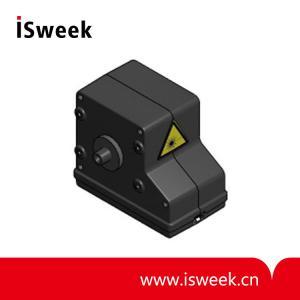
PM2.5 Sensor OPC-N2 Features:
Particle Range Spherical Equivalent Size um (based on 1.5RI) 0.38~17 Sampling Interval Histogram Period (seconds) 1.4~10 Total Flow R/min 1 Maximum Particle Count Rate Particles/sec 10000 Measurement Mode mA (typical) 175 Digital Interface/ Connect MicroUSB (programming), SPI (data) On-board selectable micro-SD data storage (.CSVformat) 16GB digital interface SPI (Mode1), USBLaser classification as a closed enclosure Class1 Temperature range °C-10~50 Humidity range %rh (continuous) 0~99 (non-condensing)
The OPC-N2's electronic device uses a SPI interface combined with a software application to intuitively display the number and distribution of various sizes of microparticles directly on a computer or Android phone, making it very easy to use.
UK Alphasense PM2.5 Sensor/Atmospheric Particle Monitor - OPC-N3
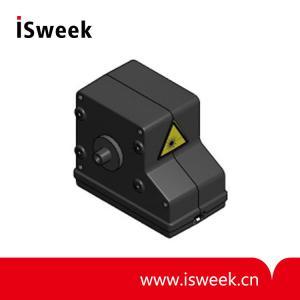
The PM2.5 sensor/atmospheric particle monitor OPC-N3 is an upgrade of OPC-N2. It has the same appearance as OPC-N2. The measurement range is 0.38-40um and can measure up to 2,000 μg/m3. The number of channels is extended to 24 , At the same time, the on-board temperature and humidity Sensors can be applied to the monitoring of heavily polluted environment;
PM2.5 Sensor / Atmospheric Particle Monitor OPC-N3 Characteristic Parameters:
measuringParticle size range Spherical equivalent particle size 0.38~40 Size Classification software Number of channels 24 Sample interval Histogram Period (seconds) 1~30 Total flow (typical) L/min 1.2 Sample flow (typical) mL/min 220 Maximum particle count rate Particles/sec 10000 Maximum coincidence probability % Concentration 10 6 particles/L 0.84% ​​Concentration 500 particles/L 0.24
power supply
Measurement mode mA (typical) 175 Standby mode mA (typical) <50 Voltage range VDC 4.8~5.2 Power-on transient mW for 1ms <5000 data
Digital Interface / Connection SPI (Real-Time Data and Communication)
Micro USB (firmware upgrade and stand-alone mode)
Data Storage Micro SD (.CSV Format) (GB) 16 Key Specifications
Digital Interface SPI (Mode 1), USB
Laser Level and Package Enclosure Level 1 Temperature Range °C-10~50 Humidity Range %rh (Cont.) 0~95 (non-condensing) Weight g<105
British alphasense PM2.5 Sensor/Dust Sensor - OPC-R1
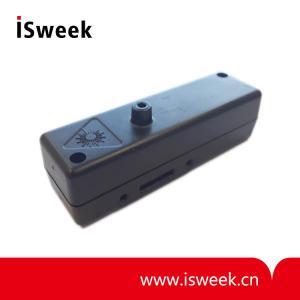
United Kingdom alphasense PM2.5 Sensors / Dust Sensors OPC-R1 Parameters:
measuringParticle Size Range Spherical Uniform Size (um) (Based on 1.5RI) 0.4 to 12.5 Size Classification Software Tree Number 16 Sample Interval Histogram Time (sec) 1 to 30 Total Flow Rate R/min 1 Maximum Particle Count Rate Particles/sec 10,000 Maximum Coincidence Probability 106 Particles/L Concentration Percent 0.84500 Particles/L Concentration 0.24
Power consumption
Measurement mode mA (typical) 95 laser on, fan off mA (typical) < 5 voltage range VDC 4.8 to 5.2 on transient mW (last 1ms) < 5000 specification parameters
Digital Interface (No Data Storage) SPI Mode 1 Laser Class Closed Enclosure Class 1 Temperature Range °C-10 to 50 Humidity Range % rh (Constant) 0 to 95 (non-condensing) Weight g< 30
2, Japan Sharp dust sensor (on behalf of model: GP2Y1010AU0F)
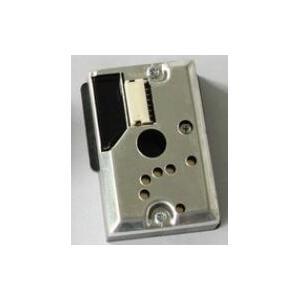
PM2.5 Dust Sensor/Dust Sensor GP2Y1010AU0F Features:
It can measure tiny particles above 0.8 micron, sense the smoke and pollen produced by tobacco, house dust, etc.
Sensitivity: 0.5V/(0.1mg/m3)
Input voltage: -0.3-7V
Output voltage (no dust): 0.9V (TYP)
Consumption current: 11mA
Sensitivity: 0.5V/0.1mg/m3
Small size, light weight, easy to install
3, Japan Shenrong dust sensor PPD4NS/PD42NS/ PPD42NJ
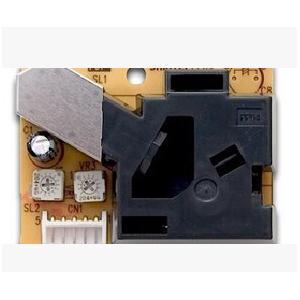
Feature introduction
Ppd42nj (Official model is relatively messy, according to its specifications) Minimum particle diameter detected: 1μm or more;Data refresh: 10-90ms
Output method: PWM
Working power: DC5V;
Volume: 59*45*22(mm)
PPD42NJ is the only type of dust sensor sold by Shin Rong in China. It does a very good job. Here are some fakes!
4, South Korea syhitech dust sensor DSM501 (as a substitute for PPD42nj, in a low-cost way to obtain a very substantial market)
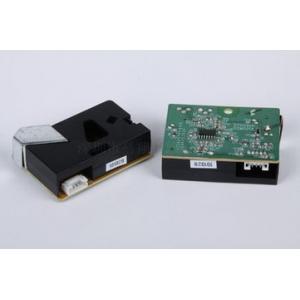
Dust sensor DSM501 features introduced
DSM501 minimum detection particle diameter: 1μm or more;Data refresh: 10-90ms
Output method: PWM
Working power: DC5V;
Volume: 59*45*22(mm)
The range width of the sensor is 0-8000/283ml, and about 30,000 particles/L
Korea syhitech PM2.5 Sensor - PDSM010
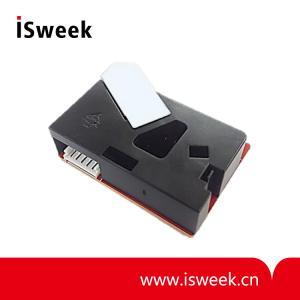
Korea syhitech Particle Sensor Module PM2.5 Sensor PDSM010 Features:
Customize the sensitivity for effective control in your application
Detects particles of about 1μm
MCU control (factory calibration)
Easy to maintain
PWM output (low logic pulse active)
Noise protection
From the application point of view. Domestic sensors can also be considered, in fact, the price is more economical
What kind of PM2.5 sensor is suitable for online consultation with ISweek?
The strong and reliable structural design of the Cable Clamper can support the fixed installation requirements of multi-strand cables at the same time. Cabling flexibility and reliable adjustability.
The top of the Cable Clamper is designed with a helical butterfly wrench screw, which can be tightened manually or with a screwdriver. Its easy installation design can complete the fixing of a large number of cables in a short time. The high-quality materials make the product suitable for harsh working environments.
Cable Clamper,Emc Shielded Cable Clamp,Din Rails Clamper,Shield Cable Clamp
Kunshan SVL Electric Co.,Ltd , https://www.svlelectric.com